Introduction
In these series of articles on vaccines I would like to spend some time on how vaccines work with the immune system so you can appreciate how complex the generation of vaccine mediated response is and how critical it is that vaccinated infants, young children and even adults possess a healthy immune system to protect themselves from not only the infectious disease but the potential adverse effects from the vaccine itself.
Vaccine Adjuvants Types
| ADJUVANT NAME | INGREDIENT | MECHANISM OF ACTION |
| Incomplete Freund
(Not used because of Toxicity problems) |
Oil in water emulsion | Delayed release of antigen, enhanced uptake by macrophage |
| Complete Freund
(Not used because of Toxicity problems) |
Oil in water emulsion with dead mycobacteria | Delayed release of antigen, enhanced uptake by macrophage Induction of co-stimulators in macrophages |
| Freund with MDP
(Not used) |
Oil in water emulsion with Muramydpeptide (MDP), a constituent of mycobacteria | Same as above |
| Alum (Aluminium hydroxide) | Aluminium hydroxide gel | Delayed release of antigen, enhanced uptake by macrophage |
| Alum Plus (Bordetella pertussis) | Aluminium hydroxide gel with killed B.Pertussis | Delayed release of antigen, enhanced uptake by macrophage Induction of co-stimulators in macrophages |
| Immune stimulatory Complex (ISCOM) | Matrix of Quil A containing viral proteins | Delivers antigen to cytosol allows induction of cytotoxic T cells |
The following 2 charts display the current vaccines that contain adjuvants and those that do not (Chart 1), and Chart 2 displays the type of adjuvant used inside the vaccine. Both include timelines so you can see the use of adjuvants date back to the 1920`s.
Chart 1 (All vaccines with and without adjuvants)
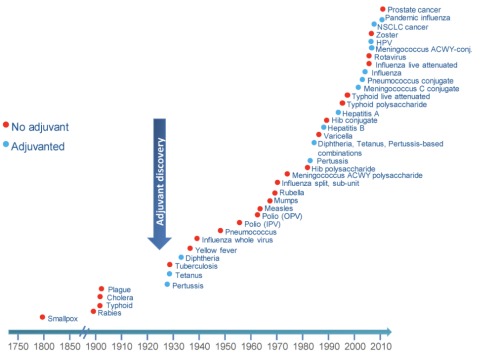
Chart 2 (Current adjuvants used in Vaccines)
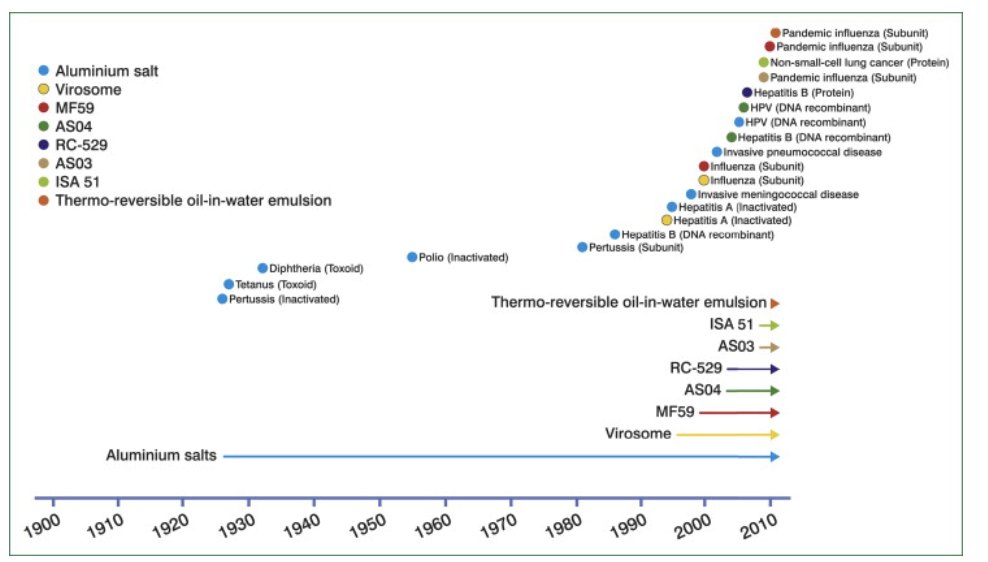
Introduction – Vaccine adjuvants
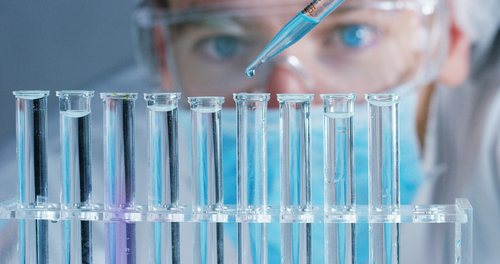
Since vaccine manufacturers and regulatory authorities have scrutinized what ingredients should be part of vaccine products they have moved away from prolific use of live viruses to stimulate the immune system and to use inactivated (Killed virus) type vaccines. The live virus vaccine, although potentially harmful at least in an unhealthy immune system, the body can in most cases handle it. In moving away from live virus vaccines and replacing with an inactivated virus meant that the vaccine lost its potency to stimulate the immune system. This is where the idea of adding a synthetic stimulant or adjuvant arose to replace the potency of the live virus.
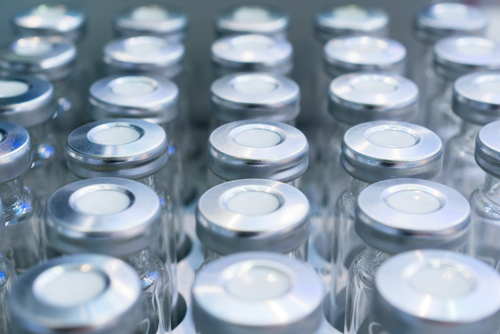
Aluminium Salts (Phosphate or Hydroxide)
Since 1926 when aluminum was first introduced until the present day this adjuvant seems to be the most used. Although it is capable of adequately stimulating the immune system there are risks associated with it since it has the potential to cause sterile abscesses (a benign lump develops at the inoculation site), eosinophilia (Excessive Eosinophils which are Immune system (IS) white blood cells (WBC) that the IS use to destroy multicellular parasites and vertebrae infections, a condition that can cause organ damage) and myofascitis (blood toxicity). However, the Alum salts are relatively weak and rarely induce cellular immune response (TH1, no antibody production) but preferentially elicit adaptive immune response (TH2, with anti-bodies) by mediating the differentiation of B cells that secrete anti-body isotypes IgG and IgE (IgG = most abundant anti-body in plasma 75-85%, IgE = secreted by plasma cells in the skin, gastrointestinal mucosa, respiratory tract and tonsils mediating inflammation and allergic effects). Generally, increased IgE can trigger allergenicity and neurotoxicity but the low doses of aluminium salts are excreted by the kidney, obviously if the vaccinated has renal complications the aluminum can accumulate in the body and become toxic. This also could occur if the liver is compromised or is dysfunctional leading to possible neurological problems and/or dialysis associated dementia since accumulative aluminum levels predominantly affect the brain and bone tissue. What I do not understand is that calcium can and has been used with the DtaP vaccine. The advantage is that calcium is a natural occurring mineral in the body and therefore non-toxic, as well increasing IgG ( which is preferable) but does not increase IgE (which is also preferable).
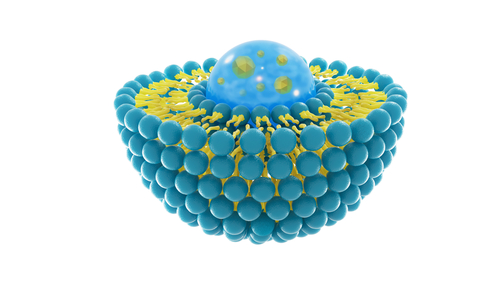
Liposome Adjuvants
Referred to as a Virosome this is a very innovative lipid based carrier vaccine delivery system. Liposomes are synthetic sphere that encapsulate antigens. It is a lipid (fat) envelope molecule similar to the LDL/HDL lipid envelopes that are featured in the cholesterol story. The envelope is constructed from a host lipid membrane and a Viral spike glycoprotein (known as Peplomers that are protruding spikes designed to only bind to certain receptors on the host cell) but does not contain any viral genetic material. This technique is used influenza (subunit type) and Hepatitis A (Killed virus) vaccines. However, they still use an Aluminium adjuvant in the Hepatitis A vaccine. So it may improve vaccine delivery but very little else..you are still faced with the choice of using a potent live virus or a killed virus with adjuvant.
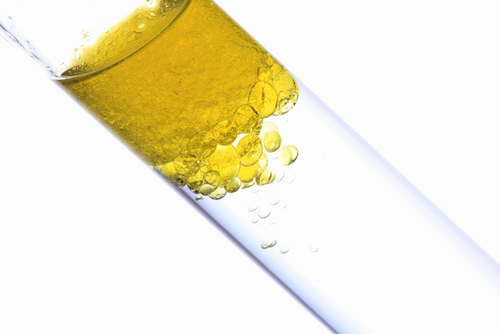
Adjuvant Emulsions
This type of adjuvant is an oil in water emulsion but it was initially considered as too toxic for human prophylactic vaccine use, since the general side effects included a severe inflammatory reaction and granulomas ( an accumulation of immune cells known as histiocytes (or macrophages). These structures form when the Immune system attempts to `wall-off“ substances that it regards as foreign but is unable to eliminate it, and the structure so formed is a lump or nodule. If the granuloma contains necrosis (accumulation of dead cells) its origin is probably of an infectious nature from tuberculosis for example. Whereas in Crohn`s disease ( an inflammatory condition that affects the intestinal wall and other parts of the abdomen) granulomas are found in the gut wall. A splinter of a piece of glass penetrates the soft tissue is a foreign body granuloma.
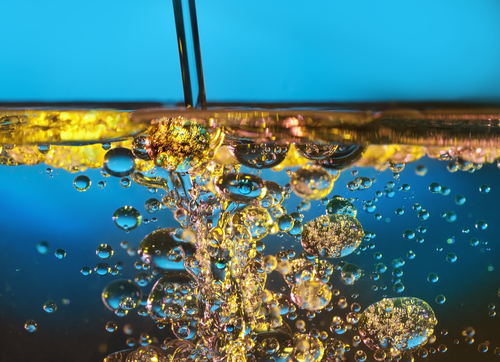
Adjuvant Emulsions -MF59
One concoction of an adjuvant emulsion is MF59 which uses a natural oil found in (abundance ) in shark liver and to a lesser extent in Olive and Palm oil and small quantities found in the blood and skin. The substance is Squalene a polar polyunsaturated fat (PUFA such as found in nuts), an Omega 2 fatty acid that is featured in an intermediate phase of the Cholesterol synthesis pathway. Squalene is a strong anti-oxidant, an oxygen cellular generator ( like Beets for organs ) especially for under 30`s sports people ( after this age bodily squalene content drops off sharply). It is also a powerful stimulant of the Immune system because of the Alkoxy Glycerol (glyceryl ether lipids) content, but in turn it is actually an Immune system nutrient.
Polysorbate 80 Emulsifier
The only potential problem is that MF59 uses two non ionic surfactants (a detergent component), polysorbate 80 and sorbitan trioleate 85, which are included to optimally stabilize the small emulsion droplets. Studies in mice demonstrate that the BBB (Blood Brain Barrier) is subject to solvent mediated disruption with chemicals such as ethanol (alcohol),and dimethyl sulfoxide (DMSO- a solvent used for skin conditions like scleroderma), and detergents like Polysorbate 80. In nano-particle format Polysorbate 80 is being used to transport drugs across the BBB to treat disorders in the brain such as tumors and drugs treating Alzheimer’s disease. Like in the Freund’s adjuvant which has not been approved due to toxicity, first it elicits an immune response to the injection site to induce anti-body production, and secondly it causes an inflammatory response that opens the BBB.
One vaccination using this solvent might be acceptable but a multiplicity of vaccines using this same polysorbate 80 on a newborn ( Dr Palevsky Pediatrician asks the question in his 2009 paper “What viral,bacterial, yeast, heavy metal, detergent vaccine ingredients need to pass into the brains of our children“) could cause problems especially if the gut flora is unbalanced and pathogenic flora are already producing toxic compounds against an open BBB. It is important to know that the BBB is of similar design to the Tight junction (TJ) design of the epithelium in the gut so certain toxins can potentially compromise permeability of the TJ of the BBB, beside the Polysorbate. Vaccines that use Polysorbate solvents are the DtaP, Hepatitis A,HPV (Gardasil), Influenza. Rotavirus, Pneumococcal PCV13, Meningococcal-B (Trumenba). Within the first 2 months of life the vaccine schedule requires 1 dose of Rotavirus, DtaP, Hib, Pneumococcal PCV13 and Poliovirus (IPV), so 3 out of the 5 vaccines contain the Polysorbate ingredient. This is then repeated at 4 months and 6 months. Most definitely the newborn’s gut needs have its integrity verified which I doubt does not happen so there is a potential risk. I say again all new mother`s should be aware, don’t play russian roulette..protect your child from the potential infection and the vaccine.
Membrane Attack Complex (MAC)
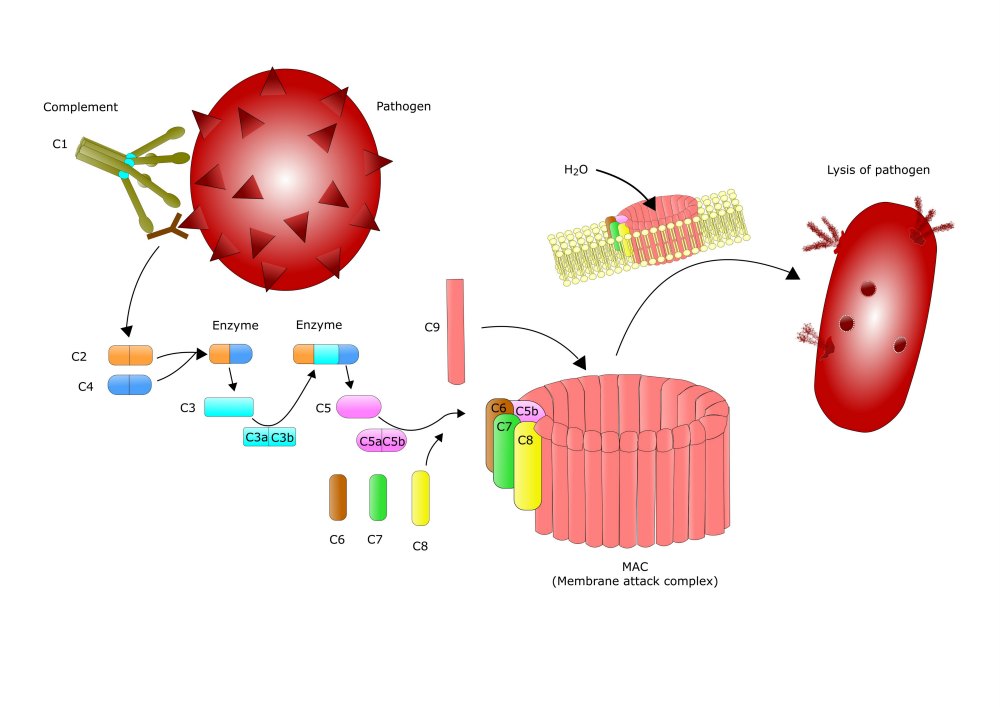
Another potential problem is the possible interference with a subsystem of the Innate Immune system called the Complement Membrane Attack Complex (MAC). This weapon which is part of the innate immune complement system is engaged as a ‘trigger-enzyme cascade’ using precursor ( inactivated) enzymes called zymogens. This system involves some 35 proteins that exist in the blood or bound to host cells where these proteins have a Cx nomenclature. This MAC or terminal complement complex is initiated (Stage 1) by the binding of Anti-body Proteins C5B,C6( see diagram below) which are then bound to the antigen membrane by C7. Stage 2, Polymerization ( chemical reaction) uses C8 to bind to the C5B,C6,C7 complex that burrows a hole ( pore) in the membrane of the antigen which fills with water and oil until it disintegrates.
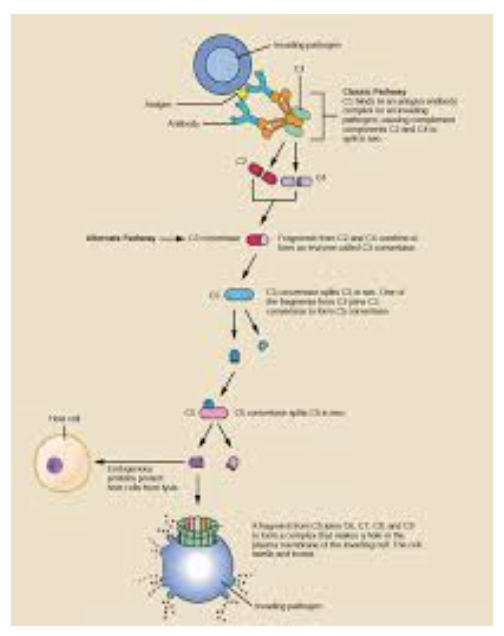
Like all cellular antigens that are IS targets the body must ensure that is defense mechanisms does not attack and destroy host cells. To achieve this, regulatory factors including the gene expression of CD59 (on chromosome position 11) are set in motion. CD59 quenches early complement activation and amplification protecting host cells from a MAC attack, since the CD59 is a MAC inhibiting glycoprotein that attaches to almost all host cell via a GPI (Glycophosphattidylinositol – a fat substance + a carbohydrate) anchor, thus providing membrane stability and cellular recognition. It must be realized that some pathogens have developed ingenious methods to avoid destruction by a MAC attack by mimicking CD59 on their membrane surface for example. Viruses such as HIV, Cytomegalovirus and Vaccina posses the ability to incorporate CD59 into their own viral envelope.
In addition to CD59 there exists proteins that are regulators of complement activity (RCA) produced at the `Convertase`stage (See diagram above) earlier on during the cascade initiation. These serine protease enzymes form C3b.Bb and C4b.2a complexes. The protective action on a host cell is to prevent the trigger enzyme cascade from initiating ( the start of a MAC attack) which is done in the presence of Sialic acid, a component of most host cells in the body, but not pathogen cells which the complement system detects. It is interesting to note that RCA`s protect against cancer malignant cells..another reason to maintain a healthy immune system in most circumstances. Finally the master regulator for the MAC system is C1 -Inhibitor (C1-INH). Again certain pathogens can evade destruction by the host by mimicking these protective host complement regulatory proteins or binding to these proteins on their own surfaces. Pathogens such as Borrelia ( 21 strains cause Lyme disease and 29 strains cause relapsing fever and uses ticks and flies as carriers) and Francisella (causes Tularemia a serious infectious disease that can lead to pneumonia and carried by rabbits, ticks and deer flies) display such exploitation’s. It is interesting to note the sheer power and complexity of the chemical intelligence/surveillance of our Immune system to recognize not only the host cells but to differentiate between the bacterial microorganisms that make up our commensal flora and beneficial flora
As you can appreciate the body has various regulatory means to control this MAC weapon, and in turn to protect its own cells. So what has all this `stuff`got to do with vaccines. There are some schools of thought that the detergents that are contained in some vaccines such as Polysorbate and Triton X-100 (Octylphenol polyethoxylate) can interfere with the IS Complement system, by-passing the regulatory systems in place such as CD59,CR1, and the Complement regulatory proteins C3b.Bb and C4b.2a complexes in the presence of sialic acid, and simply randomly attacks host cells. Researchers such as Dr Ana Soto (as referenced in an old 1998 article by Chris Stavroudis) claims that Triton X-100 is broken down in rats to octylphenol which is strongly estrogenic (it also possible that humans also produce the same substance after metabolizing Triton X-100. The article on Polysorbate 80 by Vaccine choice Canada claims that Polysorbate 80 when injected breaks down into sorbitol (a sugar alcohol used as a sweetener and making corn syrup) and ethylene oxide (A sterilant used to make ethyl alcohol), the likes of which may also cause problems.
Conclusions
I don’t believe that there is any question on the benefits of vaccines, but the problem arises with how they are administered and today’s ingredient list. One of the smouldering issues with all anti-vaccinists (I use this term loosely since they probably recognize that vaccines are beneficial in some circumstances) such as Dr Suzanne Humphries, Dr Sheri Tenpenny, Barbara Loe Fisher and many others is the lack of honest, trustworthy safety and efficacy studies on vaccines and their associated adjuvants. Some studies do exist and they all gleam with success, playing down the fact that in a small group of study participants, some get harmed due to immuno-compromising issues or the adjuvant interferes with their biology, which are not analyzed, so these few poor souls become`Ballast off a sinking ship`. I have already documented the risks associated with Aluminium intravenously administered ( ingesting Aluminium, the body can successfully excrete it, but injecting it causes 90+% to be absorbed by the body no matter what the dose). The use of detergent surfactants is also potentially problematic since it has the ability to cause harm. We know that one surfactant, Polysorbate 80 is used in pharmacology to assist the delivery of drugs including chemotherapeutic agents across the BBB to treat neurological disorders, but vaccine ingredients have no place there. If indeed this same surfactant does in fact by pass the Innate Immune Complement Membrane Attack complex and simply attack our own host cells without control or regulation this can be disastrous and potentially fatal..have studies been carried out to test this `hypothesis`..probably not..or at least my research did not uncover any. If indeed Octylphenol ethoxylates are toxic to humans ( presently unknown) they are certainly toxic to aquatic life, but if there is a potential risk then surfactants like Triton X-100 comes into question.
I will end this discussion with a quote from Lawrence B. Palevsky, MD, FAAP (pediatrician):

“Children are born with a cellular mediated immune system (TH1 cells – T-helper 1), a humoral immune system (TH2 cells – T-helper 2), and a regulator immune system (TH3 cells – T-helper 3) as major pieces of their overall immune systems. These three arms are immature when babies are born, and begin to mature as children are exposed to their environments through their nervous systems, skin, airways and intestines. Antibiotics, poor nutrition, stress, exposure to heavy metals and other environmental toxins, and the use of vaccines, may interfere with the proper maturing process of these three arms of children’s immune systems. In theory, if the TH system is allowed to mature, and is not interfered with, children will develop a mature, balanced TH1, TH2 and TH3 immune system by age three.”
References/Acknowledgments:
- Peplomer,Granuloma,Glycolipid,CD59 Wikipedia
- New generation Vaccine adjuvants Novartis Vaccines & diagnostics Derek T O`Hagen
- The mystery behind membrane insertion: a review of the complement membrane attack complex C.Jones, D.Bubeck, M.Dunstone, Aug 2017 NCBI
- Polysorbate 80: A risky vaccine ingredient R.Buttar Center for advanced medicine and clinical research 2016
- MAC Sailhome website
- The complement system:History,pathways,cascade and inhibitors P.Nesorgikar, B.Spiller, R.Chavez European journal of Microbiology and Immunology 2012 NCBI
- Exploitation of complement regulation proteins by Borrelia & Francisella Madar, Bencorova, Mlynarcik, Almeida, Soares, Bhide, Putzova,n Kovac, Coelho, Bhide, 2015 NCBI
- Polysorbate 80 increases the subsceptability to oxidative stress in rat Evolution of mucosal damage of surfactants in rat jejunum and colon 1995 NCBI
Google Images: Vaccine adjuvants & Membrane Attack Complex(MAC)
- Polysorbate 80 risks Vaccine choice Canada Dec 2013
- Aluminium and vaccine ingredients:What do we know, what we don`t know L.Palevsky Pediatric MD 2009
- Octylohenol Ethoxylates Scottish Environment Protection Agency (SEPA)
Author: Eric Malouin